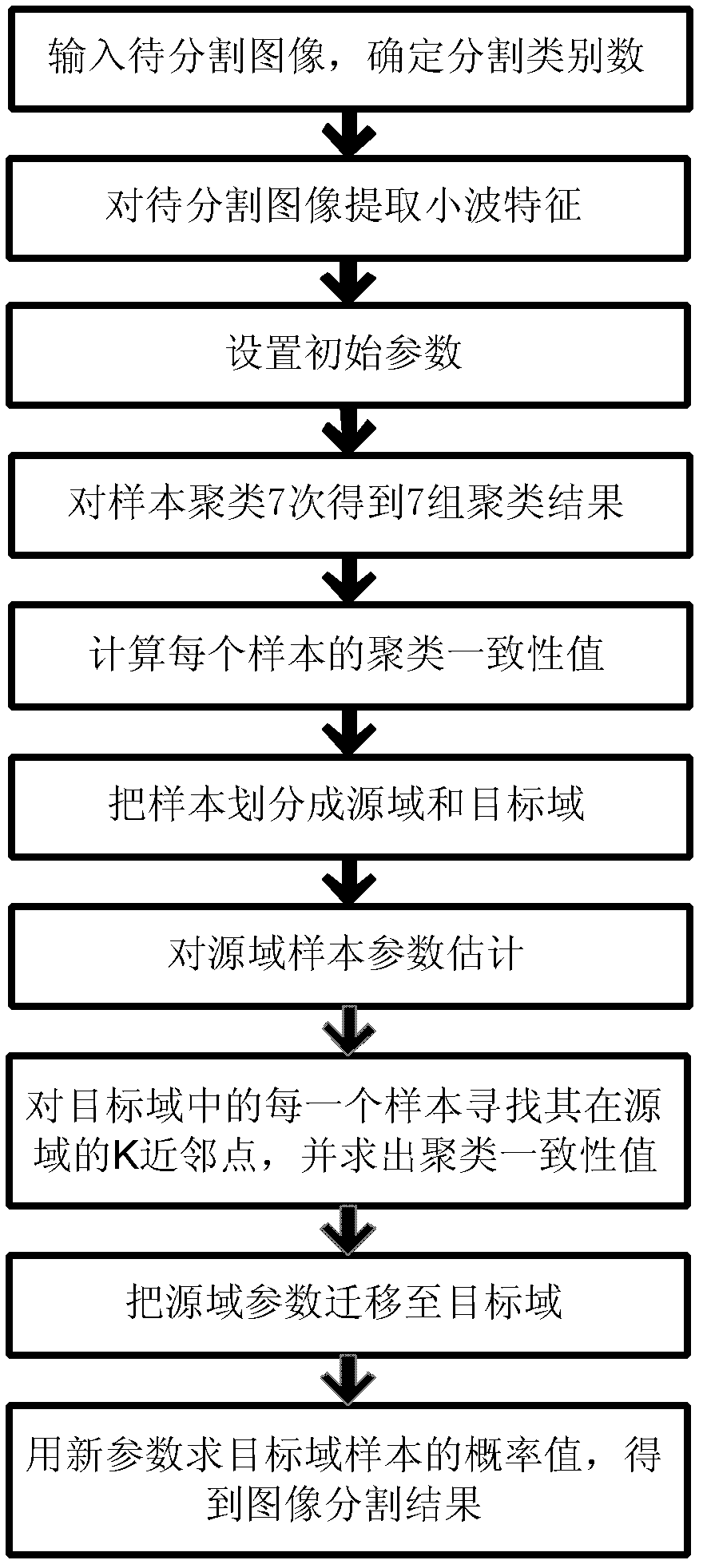SAR (synthetic aperture radar) image segmentation method based on GMM (gaussian mixture model) parameter transferring and clustering
An image segmentation and clustering technology, applied in the field of image processing, can solve problems such as easy to fall into local optimum, high cost, misclassification, etc., and achieve the effect of stable and good segmentation effect, good regional consistency, and accurate recognition of ground objects
- Summary
- Abstract
- Description
- Claims
- Application Information
AI Technical Summary
Problems solved by technology
Method used
Image
Examples
Embodiment Construction
[0024] refer to figure 1 , the specific implementation process of the present invention is as follows:
[0025] Step 1. Input the SAR image to be segmented, judge the main target and background to be recognized according to the image content, and determine the number of segmentation categories C, and the value of C in this example is 2.
[0026] Step 2. Extract the features of the SAR image to be segmented.
[0027] SAR images not only have a large amount of data, but also have different back-emission and scattering characteristics during the imaging process, so they have rich amplitude, phase, polarization and texture information, and the inherent coherent speckle noise of the image has great impact on the segmentation performance. Therefore, it is necessary to analyze the texture of the SAR image before image segmentation to extract effective texture features for clustering.
[0028] On the basis of the above analysis, the SAR image to be segmented is subjected to 3-layer ...
PUM
 Login to View More
Login to View More Abstract
Description
Claims
Application Information
 Login to View More
Login to View More - R&D
- Intellectual Property
- Life Sciences
- Materials
- Tech Scout
- Unparalleled Data Quality
- Higher Quality Content
- 60% Fewer Hallucinations
Browse by: Latest US Patents, China's latest patents, Technical Efficacy Thesaurus, Application Domain, Technology Topic, Popular Technical Reports.
© 2025 PatSnap. All rights reserved.Legal|Privacy policy|Modern Slavery Act Transparency Statement|Sitemap|About US| Contact US: help@patsnap.com



